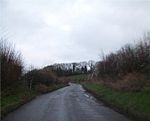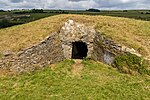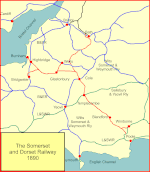Norton Brook
Rivers of Somerset

Norton Brook is a small stream in Somerset, United Kingdom. The stream is a tributary of Wellow Brook. The body of water is located near Norton St Philip. Its length is close to 0.92 Miles (0.84 km). The stream further on splits up in two ways.
Excerpt from the Wikipedia article Norton Brook (License: CC BY-SA 3.0, Authors, Images).Norton Brook
Ford Road,
Geographical coordinates (GPS) Address Nearby Places Show on map
Geographical coordinates (GPS)
| Latitude | Longitude |
|---|---|
| N 51.32245 ° | E -2.35903 ° |
Address
Ford Road
Ford Road
BA2 8QT
England, United Kingdom
Open on Google Maps










